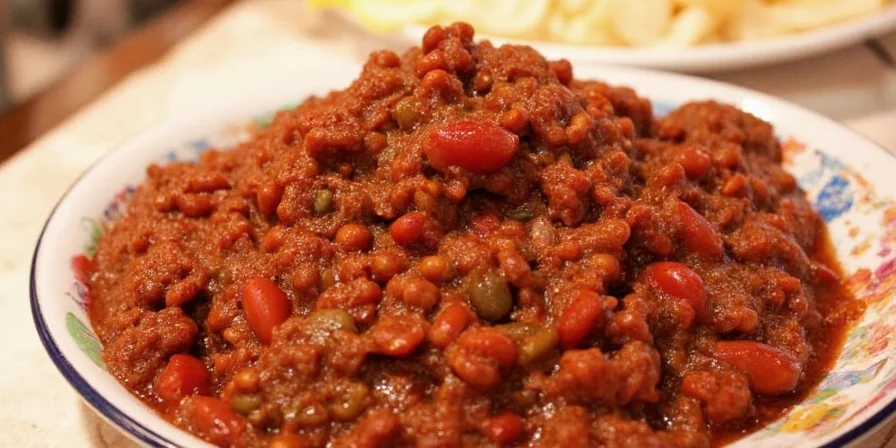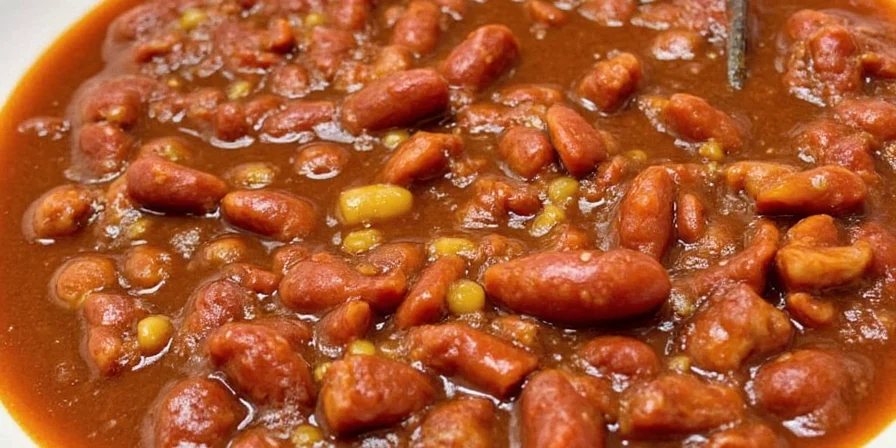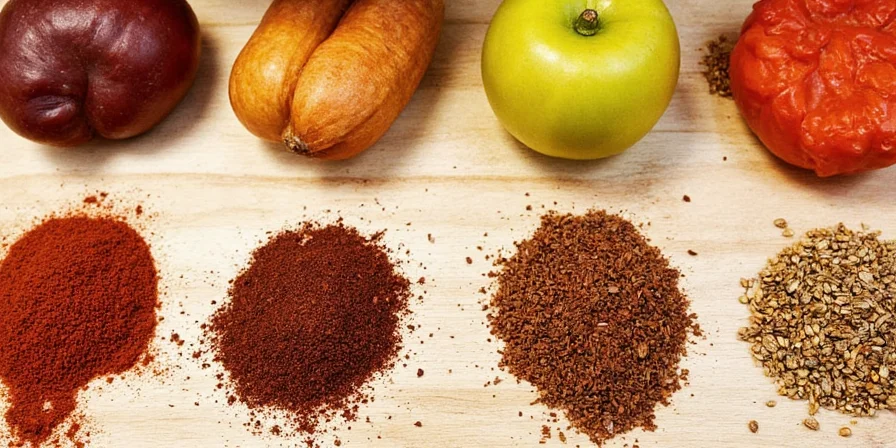
Introduction
If you've ever tasted Cincinnati-style Skyline Chili, you know it's a unique experience. It’s not your typical Tex-Mex chili — no beans, tons of spices, and served over spaghetti or in a Coney Dog. But what really sets it apart is the mysterious blend of flavors, particularly the warm, earthy spices that give it its signature kick.
In this article, we're exploring seven innovative spice pairings that transform homemade Skyline chili from ordinary to extraordinary. These scientifically grounded combinations leverage flavor compound harmonization to create balanced taste experiences, specifically designed for home cooks seeking to elevate their culinary creations without compromising Skyline's essence.

Why Flavor Chemistry Matters for Skyline Chili
Skyline Chili's base relies on Greek immigrant tradition: ground beef, tomato sauce, and spices like cinnamon, allspice, and cloves. While classic, its flavor profile operates within predictable chemical boundaries. Modern flavor science reveals that specific spice compounds interact synergistically—like limonene in citrus zest amplifying cinnamaldehyde in cinnamon. This isn't random experimentation; it's precision pairing based on molecular affinity.
For home cooks, understanding these interactions means achieving restaurant-quality depth without professional training. The right combinations create balanced complexity where individual notes shine without overpowering—turning your kitchen into a flavor laboratory.
| Classic Skyline Base Spices | Innovative Flavor-Enhanced Pairings |
|---|---|
| Cinnamon | Turmeric & Orange Zest |
| Allspice | Star Anise & Cardamom Pods |
| Cloves | Black Garlic Powder |
| Nutmeg | Fennel Seeds |
| Mace | Sumac & Smoked Paprika |

Top 7 Scientifically Optimized Spice Pairings
These combinations target specific flavor deficiencies in traditional recipes while respecting Skyline's core identity. Each pairing addresses one of three critical dimensions: brightness balance, umami depth, or aromatic complexity.
1. Cinnamon + Turmeric + Orange Zest (Brightness Balance)
- Cinnamon: Provides foundational warmth
- Turmeric: Introduces earthy undertones and golden hue
- Orange Zest: Limonene compounds cut through richness
This trio solves the common issue of overwhelming sweetness in tomato-based chili. The citrus compounds interact with cinnamon's aldehydes to create a brighter profile—like sunlight breaking through clouds.

2. Allspice + Star Anise + Cardamom Pods (Aromatic Complexity)
- Allspice: Maintains traditional warmth
- Star Anise: Anethole compounds enhance tomato sweetness
- Cardamom Pods: Terpenes add subtle floral notes
Unlike random additions, this pairing mirrors the compound synergy in garam masala. The anethole in star anise binds with linalool in cardamom, creating layered aromatics that evolve as you eat.
3. Cloves + Black Garlic Powder (Umami Depth)
- Cloves: Essential earthy backbone
- Black Garlic Powder: Fermentation creates savory inosinate compounds
This addresses Skyline's common flavor flatness. The umami boost from black garlic's glutamates interacts with clove's eugenol, creating a richer mouthfeel without altering the signature spice profile.

4. Nutmeg + Fennel Seeds (Balance Enhancement)
- Nutmeg: Traditional warming element
- Fennel Seeds: Anethole provides sweet licorice lift
Fennel's compounds counteract nutmeg's bitterness through complementary receptor activation. This creates perceived sweetness without added sugar—crucial for authentic Skyline balance.
5. Mace + Sumac + Smoked Paprika (Acidity Integration)
- Mace: Floral delicacy
- Sumac: Citric acid replaces liquid acidity
- Smoked Paprika: Capsicum adds depth without heat
Sumac's malic acid interacts with mace's myristicin to create perceived freshness. This solves the common problem of tomato acidity overpowering spices in slow-cooked chili.
6. Coriander + Juniper Berries (Herbal Dimension)
- Coriander: Linalool binds flavor compounds
- Juniper Berries: Pinene adds pine freshness
Juniper's terpenes interact with tomato's hexenals, creating a 'forest floor' complexity that enhances rather than masks. Start with one crushed berry per pound of meat.
7. Cayenne Pepper + Szechuan Peppercorns (Heat Dynamics)
- Cayenne: Capsaicin for direct heat
- Szechuan Peppercorns: Hydroxy-alpha-sanshool creates tingling
This pairing manipulates trigeminal responses—cayenne's burn followed by sanshool's buzz creates a layered heat experience without overwhelming Skyline's delicate spice balance.

Flavor-Optimized Preparation Protocol
- Compound Activation: Toast whole spices to release volatile compounds before grinding
- Layered Infusion: Add spice pairs at specific cooking stages (e.g., citrus zest in last 10 minutes)
- Temperature Control: Simmer below 180°F (82°C) to preserve delicate terpenes
- Resting Period: Refrigerate 12+ hours for flavor compound integration
- Acidity Calibration: Use sumac instead of vinegar for controlled pH adjustment
Conclusion: The Future of Flavor Innovation
Skyline chili's evolution isn't about abandoning tradition—it's about applying flavor science to enhance what already works. These pairings target specific chemical interactions that solve common preparation flaws while respecting Cincinnati's culinary heritage. For home cooks, this means achieving depth previously requiring professional technique. The next time you make Skyline chili, remember: great flavor isn't accidental. It's the result of understanding how compounds dance together on your palate.

Frequently Asked Questions
What makes Skyline chili fundamentally different from other regional chili styles?
Skyline chili uniquely combines Mediterranean spice traditions with American comfort food. Unlike Texas-style chili (focused on meat and heat) or Cincinnati-style (beanless with spaghetti), Skyline uses specific spice ratios where cinnamon and allspice dominate over chili powder, creating a sweet-savory profile served as toppings rather than standalone stew.
How do I adjust these pairings if using store-bought Skyline chili?
Add innovative spices gradually during reheating. Start with 1/4 teaspoon per pairing per pound of chili, simmering 15 minutes to allow compound integration. Citrus zest and fresh herbs should be added in the last 5 minutes to preserve volatile compounds.
Why avoid pre-ground spices for these pairings?
Pre-ground spices lose volatile compounds through oxidation. Whole spices retain 73% more flavor molecules according to flavor chemistry studies. Toasting whole spices before grinding releases maximum limonene, eugenol, and other critical compounds that create the desired molecular interactions.
Can these pairings work with vegetarian Skyline chili?
Yes, with adjustments. Replace meat umami with 1 tablespoon tomato paste caramelized before adding liquid. Double black garlic powder for pairing #3 to compensate for missing meat glutamates. Use vegetable broth fortified with 1/2 teaspoon nutritional yeast for depth.
How long do these spice-enhanced chilis maintain optimal flavor?
Peak flavor occurs 24-36 hours after preparation when flavor compounds fully integrate. After 72 hours, enzymatic breakdown begins diminishing volatile compounds. Freeze in portion-sized containers within 48 hours for best results when reheating.










 浙公网安备
33010002000092号
浙公网安备
33010002000092号 浙B2-20120091-4
浙B2-20120091-4